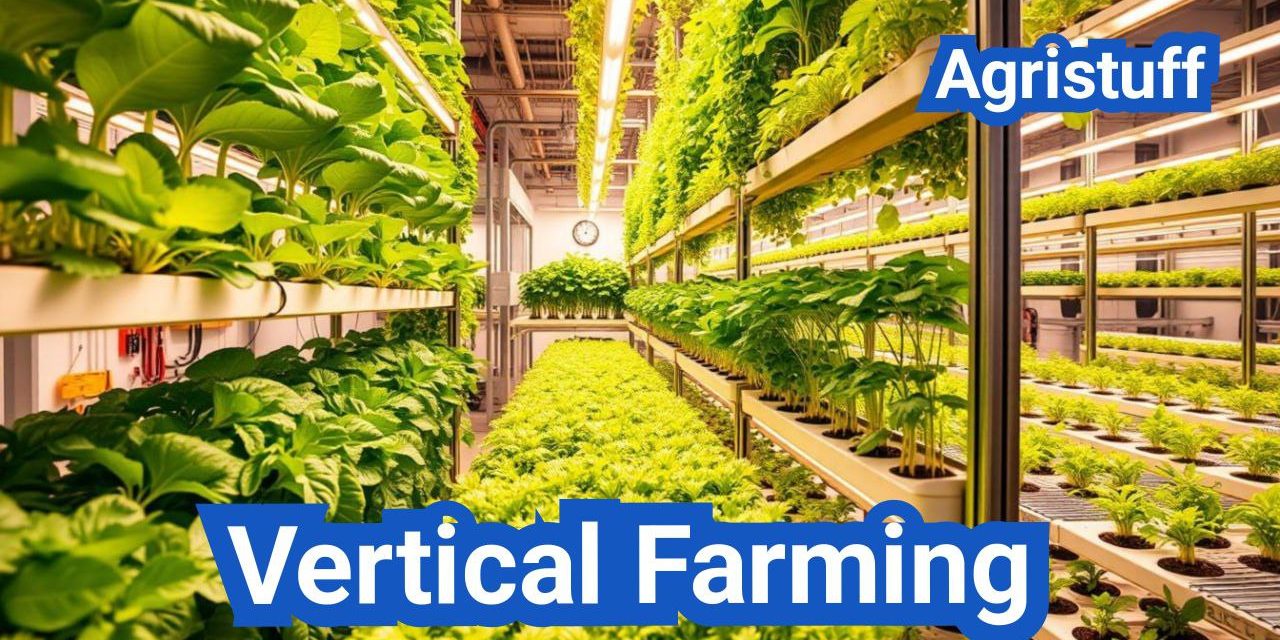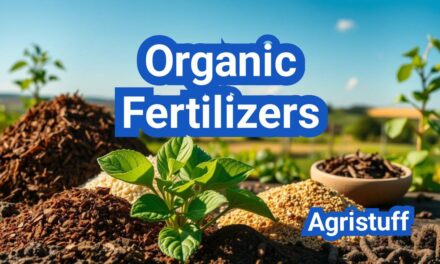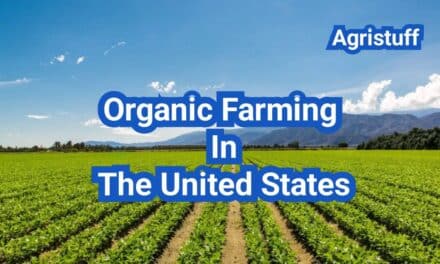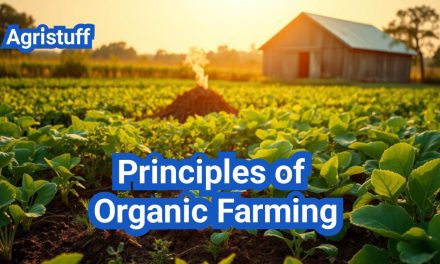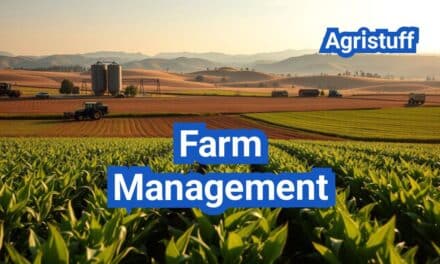Indoor cultivation ( Vertical Farming ) is revolutionizing the way we grow crops, and hydroponics is at the forefront of this innovation.
Growing crops in vertically stacked layers, often in controlled environment agriculture settings, is becoming increasingly popular due to its potential to increase yields while minimizing land use.
This method allows for precise control over growing conditions, reducing the need for pesticides and herbicides, and enabling crops to be grown year-round.
Key Takeaways
- Indoor cultivation is a rapidly growing field.
- Hydroponics is a key component of this innovative method.
- Controlled environment agriculture offers numerous benefits.
- Crops can be grown year-round with precise control.
- This method minimizes land use and reduces chemical usage.
What Is Vertical Farming?
Vertical farming involves growing plants in vertically stacked layers, often in indoor environments, to increase efficiency and reduce land use. This method of cultivation has gained significant attention in recent years due to its potential for high yields, water conservation, and reduced environmental impact.
Definition and Core Concepts
At its core, vertical farming is a technique that leverages vertically stacked layers to grow crops. This approach can be implemented using various methods, including hydroponic, aeroponic, and other soilless cultivation techniques. The core concept revolves around maximizing space while optimizing growing conditions for crops.
Historical Development of Indoor Cultivation
The idea of indoor cultivation dates back centuries, with early examples including the Hanging Gardens of Babylon. However, modern vertical farming began taking shape in the 1990s with the development of hydroponic systems. Since then, advancements in LED lighting, climate control, and other technologies have propelled the industry forward.
Current State of the Industry
Today, vertical farming is a rapidly growing industry, with numerous startups and established companies investing in this technology. The current state is characterized by innovation in areas such as energy-efficient lighting, advanced hydroponic systems, and data-driven climate control.
| Key Trends | Description | Impact |
|---|---|---|
| Increased Adoption of LED Lighting | LEDs offer spectrum control and energy efficiency | Reduced Energy Consumption |
| Advancements in Hydroponics | Improved nutrient delivery systems | Increased Crop Yields |
| Data-Driven Climate Control | Precision temperature and humidity management | Optimized Growing Conditions |
Benefits and Challenges of Vertical Farming

With the increasing demand for food production, understanding the benefits and challenges of vertical farming is crucial. As the world grapples with the challenges of climate change, population growth, and environmental degradation, vertical farming emerges as a promising solution.
Environmental Advantages
Vertical farming offers several environmental advantages, including reduced water usage, lower land requirements, and decreased greenhouse gas emissions. By using hydroponic or aeroponic systems, vertical farms can conserve water and reduce the environmental impact of traditional farming methods.
Moreover, vertical farming allows for year-round production, regardless of the season or weather conditions, making it an attractive option for regions with harsh climates. This consistency can help ensure a stable food supply and reduce reliance on industrial agriculture.
Economic Considerations
While vertical farming presents several environmental benefits, it also involves significant economic considerations. The initial investment in infrastructure, equipment, and energy can be substantial, making it a challenging proposition for small-scale farmers or those with limited resources.
However, the long-term benefits of vertical farming, including increased crop yields and reduced waste, can help offset the initial costs. Additionally, vertical farming can provide new revenue streams for farmers and create jobs in urban areas.
Space Efficiency and Urban Applications
One of the most significant advantages of vertical farming is its space efficiency. By growing crops in vertically stacked layers, farmers can maximize their yields while minimizing the land required. This makes vertical farming an attractive option for urban areas, where space is often limited.
Urban vertical farming can also help reduce transportation costs and increase food security by providing fresh produce to local communities.
Common Obstacles and Solutions
Despite its many benefits, vertical farming faces several common obstacles, including high energy costs, equipment failures, and the need for specialized knowledge. To overcome these challenges, farmers can implement energy-efficient systems, invest in reliable equipment, and develop their skills through training and education.
By understanding the benefits and challenges of vertical farming, farmers and policymakers can work together to develop more sustainable and efficient farming practices that meet the needs of a growing global population.
Types of Vertical Farming Systems
Different types of vertical farming systems have emerged, catering to diverse agricultural needs and environments. These systems are designed to optimize crop production, reduce environmental impact, and increase efficiency.
Hydroponic Vertical Farming Systems
Hydroponic vertical farming involves growing plants in a nutrient-rich solution rather than soil. This method allows for precise control over nutrient delivery, water usage, and climate conditions, resulting in faster growth rates and higher yields. Hydroponic systems are highly versatile and can be used for a wide range of crops, from leafy greens to fruiting plants.
Aeroponic Vertical Farming
Aeroponic systems take hydroponics a step further by suspending plant roots in the air and delivering nutrients through a fine mist. This approach minimizes water usage and enhances root health by providing ample oxygen. Aeroponic farming is particularly effective for crops that require high humidity and precise nutrient control.
Aquaponic Approaches
Aquaponics integrates hydroponics with aquaculture, creating a symbiotic system where fish or other aquatic animals provide nutrients to plants through their waste. In return, the plants help purify the water for the aquatic life. This closed-loop system promotes biodiversity and can be highly sustainable.
Comparing System Efficiency and Costs
When choosing a vertical farming system, it’s crucial to consider both efficiency and costs. Hydroponic systems are often more established and widely available, but aeroponic systems can offer greater water efficiency. Aquaponics, while complex, provides the added benefit of producing both crops and fish. A detailed comparison of these systems can help determine the most suitable approach based on specific needs and resources.
Each type of vertical farming system has its advantages and challenges. By understanding these differences, farmers and investors can make informed decisions about which systems to implement, ultimately contributing to a more sustainable and productive agricultural sector.
Essential Equipment for Indoor Cultivation

The backbone of any indoor cultivation operation is the equipment used to create and maintain an ideal growing environment. Indoor vertical farming relies on a range of specialized equipment to replicate the conditions necessary for plant growth.
Lighting Systems and Technologies
One of the most critical components of indoor cultivation is lighting. LED grow lights have become the industry standard due to their energy efficiency and ability to produce a spectrum tailored to plant needs. Other lighting technologies, such as HPS (High Pressure Sodium) and fluorescent lighting, are also used, although they are less efficient.
The choice of lighting depends on the type of crop, the size of the growing area, and energy considerations. For example, LED grow lights are particularly popular for leafy greens and herbs because they produce less heat and can be positioned close to the plants.
Climate Control Infrastructure
Maintaining a consistent and optimal climate is crucial for indoor cultivation. This involves controlling temperature, humidity, and air circulation. Climate control systems are designed to monitor and adjust these parameters to ensure that plants grow in the best possible conditions.
Effective climate control infrastructure includes heating and cooling systems, humidifiers and dehumidifiers, and fans to circulate air. This equipment helps prevent the buildup of CO2-depleted air around plants and maintains a uniform environment throughout the growing area.
Irrigation and Nutrient Delivery Components
Irrigation systems are vital for delivering water and nutrients to plants in an indoor cultivation setting. These systems can be designed to work with various growing mediums, such as soil, hydroponics, or aeroponics. The choice of irrigation system depends on the crop’s water requirements and the growing method.
Nutrient delivery is also a critical aspect of indoor cultivation. Systems that can accurately mix and deliver nutrients to plants are essential for maintaining healthy plant growth. This often involves the use of fertigation systems, which combine irrigation and fertilization.
Monitoring and Automation Tools
To optimize growing conditions and reduce labor costs, indoor cultivation operations often employ monitoring and automation tools. These can include sensors to monitor temperature, humidity, CO2 levels, and light intensity, as well as automated systems to control irrigation, climate control, and lighting.
Automation can significantly enhance the efficiency of indoor farming by ensuring that optimal growing conditions are maintained around the clock. This not only improves crop yields but also reduces the need for manual intervention.
How to Plan Your Vertical Farm
To establish a thriving vertical farm, it’s essential to develop a robust plan that addresses multiple aspects. This involves a comprehensive approach that includes several critical components.
Site Selection and Assessment
The first step in planning a vertical farm is selecting an appropriate site. This involves assessing the location’s climate, accessibility, and zoning regulations. Climate control is crucial in vertical farming, but the external climate can affect the energy consumption and overall cost. Therefore, choosing a location with a moderate climate can be beneficial.
Accessibility is another vital factor, as it affects the transportation of supplies and produce. A site with good connectivity to major roads and markets is preferable. Additionally, it’s essential to ensure that local zoning laws permit indoor farming operations.
Space Planning and Layout Design
Once the site is selected, the next step is to plan the layout of the vertical farm. This involves designing the layout of the growing areas, storage spaces, and operational zones. Efficient space planning is critical to maximize production while minimizing costs.
The layout should facilitate easy movement of staff and equipment, as well as ensure optimal growing conditions for the crops. This includes planning for adequate lighting, whether natural or artificial, and ensuring that climate control systems are effectively integrated.
Budget Development and Funding Options
Developing a comprehensive budget is a crucial aspect of planning a vertical farm. This involves estimating costs for infrastructure, equipment, labor, and ongoing expenses like energy and nutrients. Initial investment can be substantial, so exploring funding options is essential.
Potential funding sources include investors, grants, and loans. Some governments offer incentives for sustainable farming practices, which can be a valuable source of funding. It’s also important to consider the potential return on investment through the sale of produce.
Timeline and Implementation Roadmap
Creating a detailed timeline is vital to ensure that the vertical farm is operational within the projected timeframe and budget. This involves setting milestones for construction, equipment installation, and the commencement of farming operations.
A well-planned implementation roadmap helps in identifying potential bottlenecks and allows for adjustments to be made proactively. It also aids in coordinating with contractors, suppliers, and other stakeholders.
Setting Up Your Vertical Farming System
A well-planned setup is the foundation upon which a successful vertical farming operation is built. This involves several critical components that work together to create an optimal growing environment.
Step-by-Step Installation Guide
To ensure a smooth setup process, follow this step-by-step installation guide:
- Prepare the site: Clear the area of any debris and ensure it’s level.
- Install the framework: Construct the vertical farming structure according to your design specifications.
- Set up lighting and climate control: Install LED grow lights and climate control systems.
- Implement irrigation and nutrient delivery: Connect the irrigation system to the nutrient reservoir.
- Install monitoring and automation tools: Set up sensors and automated systems to monitor and control the environment.
Infrastructure Requirements
The infrastructure for a vertical farm includes:
- Reliable power supply: Ensure a stable power source to support all systems.
- Water supply and management: Implement an efficient water recycling system.
- Climate control: Heating, cooling, and ventilation systems to maintain optimal temperatures and humidity.
- Structural integrity: Ensure the structure can support the weight of the system, crops, and any additional equipment.
System Testing and Calibration
Once the system is installed, thorough testing and calibration are crucial. This includes:
“Testing the system under various conditions to ensure it operates as expected.”
Check all components, from lighting and climate control to irrigation and monitoring systems, to ensure they are functioning correctly.
Safety Considerations
Safety is paramount in a vertical farming operation. Key considerations include:
- Electrical safety: Ensure all electrical components are safely installed and protected from water.
- Fall protection: Implement safety measures to prevent falls from heights.
- Proper training: Ensure all staff are trained in the operation and maintenance of the vertical farm.
By following these guidelines and considering the infrastructure requirements and safety considerations, you can set up a successful vertical farming system.
Selecting Crops for Vertical Farming

The selection of crops for vertical farming depends on various factors, including market demand and growth cycles. To maximize profitability, it’s crucial to choose crops that are well-suited for indoor environments and have a strong market demand.
Ideal Plants for Indoor Environments
Leafy greens such as lettuce, kale, and spinach are ideal for vertical farming due to their fast growth cycles and high demand in local markets. Herbs like basil and cilantro also thrive in indoor conditions and can be harvested in as little as 2-3 weeks.
Other crops suitable for vertical farming include strawberries, which can produce multiple harvests per year, and microgreens, which are harvested within 1-3 weeks of germination. These crops are not only profitable but also benefit from the controlled environment of a vertical farm.
Growth Cycles and Expected Yields
Understanding the growth cycles and expected yields of different crops is essential for planning and optimizing vertical farming operations. For instance, leafy greens can be harvested every 2-3 weeks, while fruiting plants like tomatoes may take 8-12 weeks to mature.
| Crop | Growth Cycle (weeks) | Expected Yield (per sq. ft.) |
|---|---|---|
| Lettuce | 2-3 | 4-6 heads |
| Tomatoes | 8-12 | 10-15 lbs |
| Strawberries | 4-6 | 2-3 lbs |
Market Demand and Profitability Analysis
Conducting a market demand and profitability analysis is critical to determine the viability of different crops. According to a report by
“The global vertical farming market is expected to grow at a CAGR of 24.8% from 2020 to 2027, driven by increasing demand for fresh produce.”
Crops with high market demand and profitability should be prioritized. For example, leafy greens and herbs are consistently in demand and can command high prices in local markets.
Crop Rotation Strategies
Implementing crop rotation strategies can help maintain soil health, reduce pests and diseases, and increase overall yields. For vertical farming, this might involve rotating between different types of leafy greens or switching between leafy greens and herbs.
By diversifying the crops grown and implementing effective crop rotation, vertical farmers can optimize their operations for maximum profitability and sustainability.
Vertical Farming Techniques for Maximum Productivity

Maximizing productivity in vertical farming requires a combination of innovative techniques and precise control over growing conditions. By employing advanced methods, growers can significantly enhance crop yields and reduce operational costs.
Stacking and Layer Management
Effective stacking and layer management are crucial for maximizing space in vertical farming systems. This involves arranging plants in a way that optimizes light exposure and air circulation. Multi-tiered systems are commonly used, allowing for multiple layers of crops to be grown simultaneously.
- Utilize vertical space efficiently by stacking crops.
- Ensure adequate light distribution across all layers.
- Implement a rotation system to maintain uniform growth.
Light Optimization Protocols
Light is a critical factor in vertical farming, and optimizing light exposure can significantly impact crop yields. LED grow lights are often used due to their energy efficiency and ability to emit specific wavelengths tailored to plant needs.
- Select LED grow lights that match the spectral requirements of your crops.
- Adjust the intensity and duration of lighting based on plant growth stages.
- Implement a lighting schedule that mimics natural daylight patterns.
Nutrient Solution Formulation
A well-formulated nutrient solution is essential for healthy plant growth in vertical farming systems. The solution should be tailored to the specific needs of the crops being grown, taking into account factors such as nutrient balance and pH levels.
- Monitor and adjust the nutrient solution regularly.
- Use a balanced fertilizer that meets the crop’s nutritional requirements.
- Maintain optimal pH levels to ensure nutrient availability.
Climate Parameter Optimization
Maintaining optimal climate conditions is vital for maximizing productivity in vertical farming. This includes controlling temperature, humidity, and air circulation. Climate control systems can be used to create an ideal growing environment.
- Set temperature ranges that are suitable for the specific crops.
- Maintain optimal humidity levels to prevent water stress.
- Ensure adequate air circulation to prevent disease.
Water and Nutrient Management in Vertical Systems

In vertical farming, managing water and nutrients efficiently is key to sustainable production. Effective water and nutrient management not only enhance crop yields but also contribute to the overall sustainability of the farming system.
Water Conservation Methods
Water conservation is critical in vertical farming due to the closed-loop systems used. Techniques such as recirculating irrigation systems help minimize water waste by reusing water that would otherwise be lost. Additionally, implementing precision irrigation allows for the delivery of water directly to the roots of plants, reducing evaporation and runoff.
Another effective method is the use of hydroponic systems that optimize water usage by continuously recycling the nutrient solution. This not only conserves water but also reduces the environmental impact of nutrient runoff.
Nutrient Mixing and Monitoring
Nutrient management is equally important, as it directly affects plant health and productivity. Nutrient mixing involves formulating a balanced diet for plants, taking into account their specific needs at different growth stages. Regular monitoring of nutrient levels ensures that the solution remains optimal for plant growth.
The use of automated nutrient delivery systems can enhance precision and efficiency, allowing for real-time adjustments based on plant requirements.
pH and EC Management
Managing pH levels and electrical conductivity (EC) is crucial for maintaining an optimal growing environment. pH affects nutrient availability, while EC measures the concentration of nutrients in the solution. Regular monitoring and adjustments are necessary to keep these parameters within the optimal range for the crops being grown.
- pH adjustment involves adding acids or bases to maintain the optimal range.
- EC management ensures that the nutrient solution is not too diluted or too concentrated.
Recycling and Sustainability Practices
Recycling practices play a vital role in the sustainability of vertical farming. Water recycling and nutrient recycling not only conserve resources but also reduce waste. Implementing systems that can treat and reuse water and nutrients can significantly enhance the sustainability of vertical farming operations.
By adopting these water and nutrient management strategies, vertical farms can improve their efficiency, reduce their environmental footprint, and contribute to a more sustainable food production system.
Preventing and Managing Pests and Diseases

Pests and diseases pose significant threats to vertical farming, requiring proactive and integrated management approaches. Effective management strategies are crucial for maintaining healthy crops and maximizing yields.
Biosecurity Protocols
Biosecurity protocols are the first line of defense against pests and diseases in vertical farming. These protocols involve strict controls on the introduction of new plants, personnel hygiene practices, and regular monitoring of the growing environment. Implementing biosecurity measures helps prevent the introduction and spread of pests and diseases.
Key biosecurity practices include:
- Screening new plant introductions for signs of pests or diseases
- Using sterile equipment and growing media
- Enforcing strict hygiene practices among personnel
- Regularly inspecting the facility for early signs of pest or disease presence
Integrated Pest Management for Indoor Environments
Integrated Pest Management (IPM) is a holistic approach that combines physical, cultural, biological, and chemical controls to manage pests. In vertical farming, IPM strategies are tailored to the indoor environment, leveraging the controlled conditions to prevent pest establishment and proliferation.
Effective IPM in vertical farming involves:
- Monitoring for pests using traps and regular inspections
- Using biological controls such as beneficial insects
- Implementing cultural practices that discourage pest buildup
- Applying targeted chemical controls as a last resort
Disease Identification and Treatment
Disease identification is critical for effective disease management in vertical farming. Regular monitoring and accurate diagnosis enable the timely application of appropriate treatments, minimizing the impact on crops.
Disease management strategies include:
- Using disease-resistant crop varieties
- Applying fungicides or bactericides as needed
- Implementing cultural practices that reduce disease risk
- Removing and disposing of infected plants to prevent spread
Maintaining Sterile Growing Conditions
Maintaining sterile growing conditions is essential for preventing the spread of diseases in vertical farming. This involves using sterile equipment, growing media, and water, as well as ensuring that the growing environment is free from contaminants.
Practices for maintaining sterility include:
- Using HEPA filtration to purify the air
- Implementing strict cleaning and disinfection protocols
- Using sterile or properly treated water for irrigation
- Regularly testing for contaminants in the growing environment
Day-to-Day Operation of a Vertical Farm

Running a vertical farm requires meticulous daily attention to various aspects of the operation. This includes a range of tasks that are critical to maintaining optimal growing conditions and ensuring the overall productivity of the farm.
Daily Maintenance Checklist
A daily maintenance checklist is essential for the smooth operation of a vertical farm. This checklist should include tasks such as inspecting the irrigation system, checking the climate control infrastructure, and ensuring that all lighting systems are functioning properly. Regular maintenance helps prevent equipment failure and reduces the risk of crop loss. It’s also important to inspect the growing areas for any signs of pests or diseases.
The daily maintenance routine may also involve checking the nutrient delivery system, monitoring water quality, and performing routine cleaning tasks. By staying on top of these tasks, vertical farm operators can help prevent problems before they arise.
Monitoring Growth Parameters
Monitoring growth parameters is critical to ensuring that crops are growing as expected. This involves tracking factors such as temperature, humidity, and light levels, as well as monitoring crop health and development. Advanced monitoring systems can provide real-time data, enabling operators to make timely adjustments. Regular monitoring helps identify potential issues early, allowing for prompt intervention.
Staff Training and Management
Staff training is a vital component of successful vertical farm operation. Employees should be trained on all aspects of the operation, including maintenance tasks, monitoring procedures, and crop management techniques. Effective staff training helps ensure that tasks are performed correctly and efficiently. Ongoing training and professional development opportunities can also help to improve staff morale and retention.
Record Keeping and Data Analysis
Accurate record keeping is essential for tracking the performance of the vertical farm over time. This includes maintaining records of maintenance activities, crop yields, and any challenges or issues that arise. Data analysis can help operators identify trends and areas for improvement, enabling data-driven decision making. By analyzing data from various aspects of the operation, vertical farm operators can optimize their practices and improve overall efficiency.
Harvesting and Post-Harvest Handling

Effective harvesting and post-harvest handling are crucial for maximizing crop yields and quality in vertical farming. Proper techniques ensure that crops are gathered at the right time, handled carefully, and delivered to the market in optimal condition.
Determining Optimal Harvest Times
Determining the optimal harvest time is critical for achieving the best crop quality. Factors such as crop type, growth stage, and market demand influence the decision. For instance, leafy greens are typically harvested when they reach their full color and size, while fruiting crops are picked when they are ripe.
Monitoring crop maturity regularly is essential. This involves checking for signs of ripeness, such as color changes, texture, and size. Advanced technologies like precision agriculture tools can aid in monitoring crop health and maturity.
Harvesting Techniques for Different Crops
Different crops require different harvesting techniques. For example, leafy greens can be harvested using a simple cutting tool, while fruiting crops may require more complex handling to avoid damage. Understanding the specific needs of each crop is vital for maintaining quality.
- Leafy greens: Cut just above the soil line to allow for regrowth.
- Fruiting crops: Handle gently to avoid bruising.
- Herbs: Pinch or cut off flower buds to encourage leaf production.
Processing, Packaging, and Storage
After harvesting, crops need to be processed, packaged, and stored properly to maintain their quality. This involves cleaning, grading, and packaging crops in a way that protects them from damage and contamination.
Packaging materials should be chosen based on the type of crop and its intended use. For instance, breathable bags are suitable for leafy greens, while more robust packaging is needed for fruiting crops.
Distribution and Market Delivery
Efficient distribution and market delivery are crucial for getting crops from the farm to the consumer quickly and in good condition. This involves coordinating with distributors, managing logistics, and ensuring that crops are delivered to the right place at the right time.
Building strong relationships with distributors and understanding market demands can help in optimizing the distribution process. Utilizing technology for tracking and managing deliveries can also enhance efficiency.
Troubleshooting Common Vertical Farming Issues

The success of a vertical farm depends on its ability to troubleshoot and resolve issues related to plant health, equipment, and climate control. Effective troubleshooting is crucial to maintaining optimal growing conditions and ensuring the overall productivity of the farm.
Diagnosing Plant Health Problems
Diagnosing plant health problems is a critical aspect of troubleshooting in vertical farming. Common issues include nutrient deficiencies, pests, and diseases. To diagnose these problems, farmers should regularly inspect their crops, looking for signs such as discoloration, stunted growth, or pest infestations.
- Inspect crops regularly for visible signs of stress or disease.
- Use diagnostic tools such as pH meters and nutrient testing kits.
- Maintain a clean and controlled growing environment to prevent the spread of disease.
Equipment Failure Resolution
Equipment failure can significantly impact the operation of a vertical farm. Common equipment failures include issues with lighting, irrigation systems, and climate control systems. To resolve these issues, farmers should have a maintenance schedule in place and be prepared to act quickly when a failure occurs.
- Regularly inspect and maintain equipment to prevent failures.
- Have a backup plan in place for critical systems.
- Train staff on how to respond to equipment failures.
Climate Control Challenges
Maintaining optimal climate conditions is essential for the health and productivity of crops in a vertical farm. Challenges include managing temperature, humidity, and air circulation. Farmers can use a variety of strategies to address these challenges, including the use of climate control systems and monitoring equipment.
Key strategies for climate control include:
- Using sensors to monitor temperature and humidity levels.
- Implementing heating, cooling, and ventilation systems as needed.
- Maintaining a consistent climate through regular monitoring and adjustments.
Nutrient Imbalance Correction
Nutrient imbalances can have a significant impact on crop health and productivity. To correct nutrient imbalances, farmers should regularly test their nutrient solutions and adjust them as necessary. This may involve changing the composition of the nutrient solution or adjusting the frequency of application.
Best practices for nutrient management include:
- Regularly testing nutrient solutions.
- Adjusting nutrient levels based on crop requirements.
- Maintaining accurate records of nutrient application and crop response.
Commercial Applications of Vertical Farming
The commercial viability of vertical farming is being explored through various case studies and business models. As the industry continues to grow, understanding the commercial applications of vertical farming is crucial for investors, entrepreneurs, and farmers alike.
Case Studies: AeroFarms and Plenty Farms
Several companies are leading the way in commercial vertical farming. AeroFarms, for instance, has developed a large-scale indoor farming operation using aeroponic technology. This method allows for precise control over nutrient delivery, resulting in higher yields and reduced water consumption.
Plenty Farms is another notable example, utilizing a combination of LED lighting and hydroponics to grow a variety of crops. Their approach focuses on maximizing space efficiency and crop quality.
Business Models and Revenue Streams
Commercial vertical farming encompasses a range of business models, each with its unique revenue streams. Some operations focus on producing high-value crops for local markets, while others aim to supply larger retailers with fresh produce.
Subscription-based models are also gaining popularity, where consumers pay a recurring fee for access to fresh, locally grown produce. This approach not only provides a steady revenue stream but also helps to build a loyal customer base.
Marketing and Distribution Strategies
Effective marketing and distribution strategies are critical for the success of commercial vertical farming operations. Many farms are leveraging social media and online platforms to connect directly with consumers, promoting the benefits of locally grown, sustainable produce.
Building relationships with local restaurants and retailers is another key strategy, providing a consistent demand for the produce and helping to establish a strong brand presence in the community.
Scaling Operations Successfully
Scaling a commercial vertical farming operation requires careful planning and execution. It involves optimizing production processes, investing in efficient technology, and expanding market reach.
Successful scaling also depends on maintaining high-quality produce and adapting to changing market demands. By focusing on these key areas, commercial vertical farms can achieve significant growth and profitability.
The Future of Vertical Farming
The future of vertical farming looks promising, driven by ongoing advancements in technology and increasing adoption. As the global population continues to grow, the demand for sustainable and efficient agricultural practices is becoming more pressing. Vertical farming trends indicate a shift towards more controlled environment agriculture, leveraging technologies like AI, IoT, and robotics to optimize crop yields and reduce environmental impact.
Sustainable agriculture is at the forefront of vertical farming, with many operations focusing on reducing water consumption, minimizing waste, and promoting eco-friendly practices. As the industry continues to evolve, we can expect to see more innovative approaches to vertical farming, including the integration of renewable energy sources and cutting-edge hydroponic systems.
With the potential to increase food production while minimizing environmental footprint, the future of vertical farming is bright. As more businesses and governments invest in this technology, we can anticipate significant growth and development in the coming years, ultimately contributing to a more sustainable food system.
FAQ
What is vertical farming?
Vertical farming is a method of growing crops in vertically stacked layers, often in an indoor environment, using techniques such as hydroponics, aeroponics, or aquaponics.
What are the benefits of vertical farming?
The benefits of vertical farming include increased crop yields, reduced water usage, and improved space efficiency, making it an attractive option for urban areas.
What types of crops can be grown using vertical farming?
A variety of crops can be grown using vertical farming, including leafy greens, herbs, strawberries, and other fruits and vegetables.
How does vertical farming conserve water?
Vertical farming conserves water by using closed-loop systems that recirculate and reuse water, minimizing evaporation and runoff.
What is the difference between hydroponic and aeroponic systems?
Hydroponic systems deliver nutrients to plants through a water-based solution, while aeroponic systems use a fine mist of nutrient-rich solution to feed plants.
How do I choose the right lighting for my vertical farm?
The right lighting for your vertical farm depends on the type of crops you’re growing, with options including LED grow lights, HPS lights, and fluorescent lights.
What are the key factors to consider when planning a vertical farm?
Key factors to consider when planning a vertical farm include site selection, space planning, budget development, and timeline creation.
How do I manage pests and diseases in a vertical farm?
Managing pests and diseases in a vertical farm involves implementing biosecurity protocols, using integrated pest management techniques, and maintaining sterile growing conditions.
What are the most common challenges faced by vertical farmers?
Common challenges faced by vertical farmers include equipment failures, climate control issues, and nutrient imbalances, which can be addressed through regular maintenance and monitoring.
How can I scale my vertical farming operation?
Scaling a vertical farming operation involves developing a business plan, securing funding, and implementing efficient systems and processes to support growth.
What is the future of vertical farming?
The future of vertical farming is promising, with advancements in technology and increasing demand for sustainable produce driving growth and innovation in the industry.
Conclusion of: Vertical Farming
Introduction to Vertical Farming
Vertical farming is a modern agricultural technique that involves growing crops in vertically stacked layers, typically in controlled indoor environments. This method maximizes space utilization, conserves resources, and provides year-round crop production, making it especially valuable in urban areas where arable land is limited. Learn more from the U.S. Department of Agriculture.
How Vertical Farming Works
Vertical farming utilizes hydroponics, aeroponics, or aquaponics to grow plants without soil. These systems rely on nutrient-rich water solutions or mist and use artificial lighting such as LEDs to mimic sunlight. Temperature, humidity, and carbon dioxide levels are closely monitored to optimize growth. More on hydroponic systems at the National Agricultural Library.
Benefits of Vertical Farming
Vertical farming offers multiple benefits including reduced land use, minimized water consumption, pesticide-free produce, and lower transportation emissions. It supports local food production and can be implemented in warehouses, shipping containers, or skyscrapers. Explore research by FAO on sustainable farming.
Vertical Farming vs Traditional Farming
Unlike traditional farming, vertical farming doesn’t depend on seasons or weather, allowing consistent crop yields. It also reduces dependency on arable land and cuts down water usage by up to 95%. However, it does require higher initial capital investment and technical know-how. Read comparison at World Bank Agriculture Overview.
Types of Vertical Farming Systems
There are several types of vertical farming setups:
- Hydroponics: Plants grow in a nutrient solution without soil.
- Aeroponics: Roots are misted with nutrients.
- Aquaponics: Combines fish farming and hydroponics.
- Tower Farms: Plants grow in tall, cylindrical towers. Learn about these systems from ScienceDirect.
Crops Grown in Vertical Farming
Leafy greens like lettuce, kale, spinach, and herbs such as basil and mint are ideal for vertical farming. Some systems also support strawberries, tomatoes, and microgreens. Crop selection depends on system type, lighting, and environmental controls. Check crop suitability from Urban Ag News.
Technologies Powering Vertical Farming
Advanced technologies drive vertical farming success. These include IoT sensors, climate control systems, AI-driven analytics, and automated irrigation. Lighting systems using LED spectra are optimized for plant photosynthesis. Discover innovations from AgFunder News.
Challenges Facing Vertical Farming
While promising, vertical farming faces challenges such as high startup costs, energy consumption, and limited crop variety. Profitability hinges on technological efficiency and local market demand. Review detailed challenges at Agritecture.
Vertical Farming in the USA
Vertical farming is gaining traction across the U.S. with companies like AeroFarms, Plenty, and Bowery leading the way. States like New Jersey, California, and Kentucky are emerging hubs due to urban demand and supportive policies. See AeroFarms’ contributions to the industry.
Environmental Impact of Vertical Farming
Vertical farming contributes to sustainability by reducing the carbon footprint of food transportation, eliminating runoff, and conserving water. Energy use remains a concern, but renewable sources and energy-efficient designs are mitigating this. Environmental benefits overview from GreenBiz.
Future of Vertical Farming
The future of vertical farming looks promising with advancements in AI, robotics, and biotechnology. Integration with renewable energy, expansion to more crop types, and lower setup costs will drive adoption globally. Forecasts and trends from McKinsey & Company.
Final Thought
Vertical farming represents a revolutionary approach to food production, addressing space, sustainability, and supply chain challenges. While hurdles remain, ongoing technological progress and increased awareness suggest it will play a key role in the future of agriculture.

